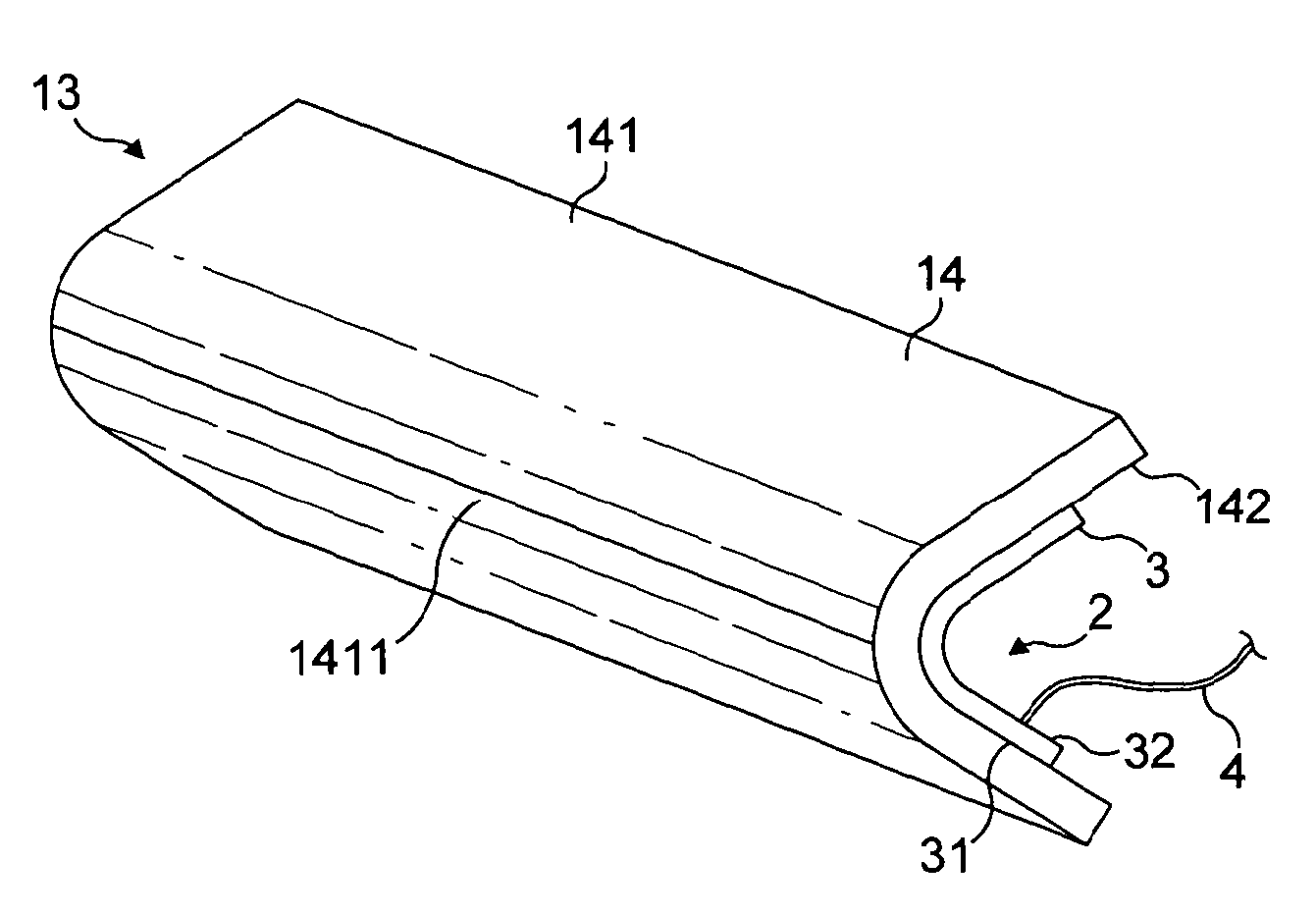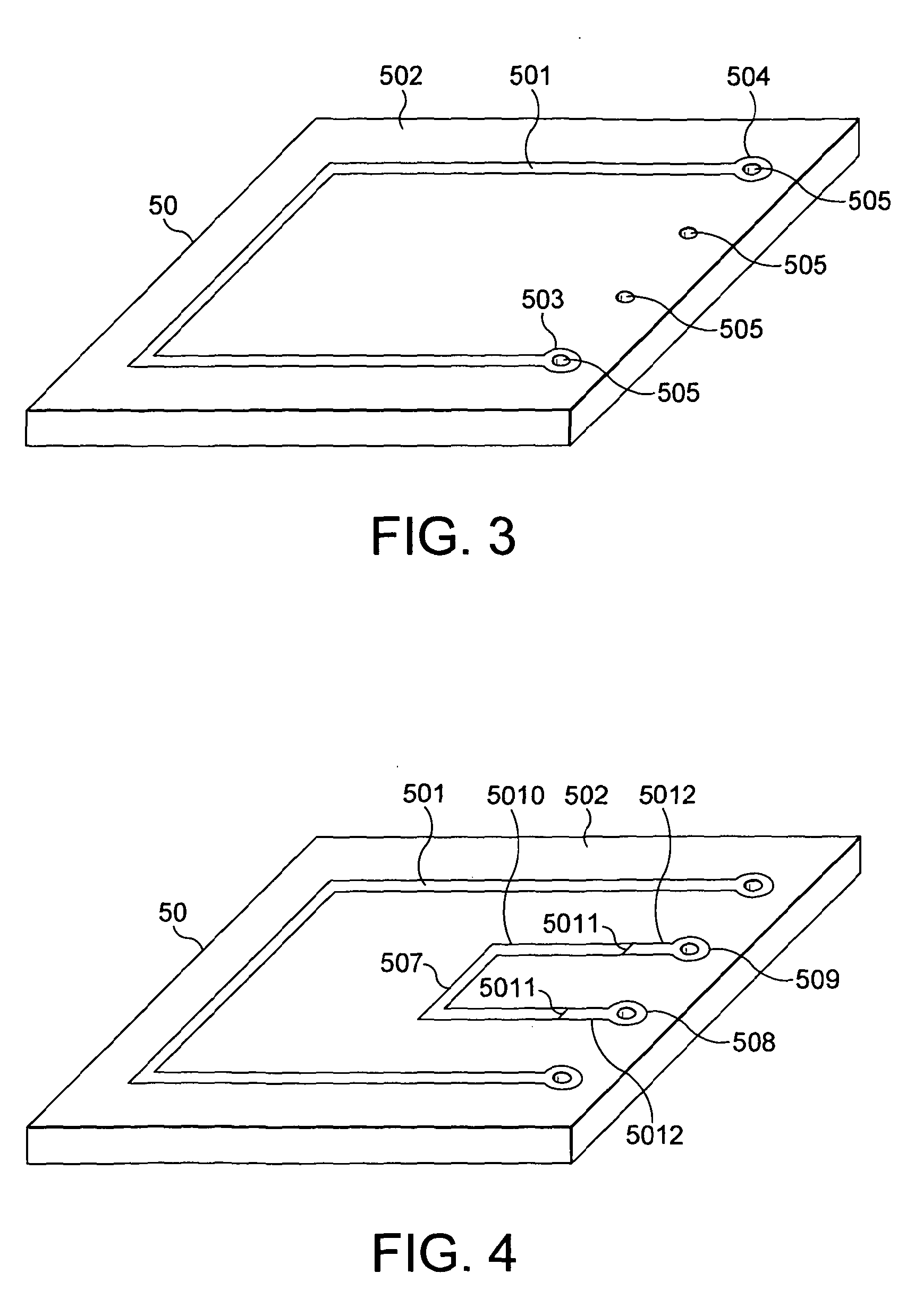Electrothermal heater
a heater and electro-thermal technology, applied in the direction of heater elements, ohmic-resistance electrodes, heating element materials, etc., can solve the problems of increasing drag, reducing the ability of an aerofoil to perform the intended function, and undesirable in-flight ice formation on the external surface of the aircraft, so as to reduce the current induced, reduce the resistance layer, and the effect of low resistan
- Summary
- Abstract
- Description
- Claims
- Application Information
AI Technical Summary
Benefits of technology
Problems solved by technology
Method used
Image
Examples
first embodiment
[0089]An assembly process for producing a heater mat in accordance with the present invention will now be described with reference to FIGS. 3-19 which depict, in a very diagrammatic manner, the components of the heater mat and how they are assembled together to produce the heater mat and how the heater mat is then bonded to an erosion shield.
[0090]The components shown in FIGS. 3-19 are very diagrammatic. For example, in relation to the dielectric layer 50 shown in FIG. 3, the thickness has been exaggerated for the sake of clarity. Also, the width and length of the layer have been reduced for the sake of clarity. In a practical embodiment, the dielectric layer would be generally rectangular and would be a sheet having a width ranging typically from 0.25 m to 1 m and a length ranging from typically 1 m to 4 m. In use, the width of the sheet will usually wrap around the chord at the leading edge of the wing, and the length of the sheet will usually extend along the span of the wing. Th...
second embodiment
[0171]There has also been described FIGS. 20-28 wherein the dielectric layers comprise a stack containing first, second, third, fourth and fifth dielectric layers; the heater element is positioned between the first and second dielectric layers; the first ground plane is positioned between the second and third dielectric layers; the first end of the first connector is positioned between the third and fourth dielectric layers; and the second ground plane is positioned between the fourth and fifth dielectric layers.
PUM
 Login to View More
Login to View More Abstract
Description
Claims
Application Information
 Login to View More
Login to View More - R&D
- Intellectual Property
- Life Sciences
- Materials
- Tech Scout
- Unparalleled Data Quality
- Higher Quality Content
- 60% Fewer Hallucinations
Browse by: Latest US Patents, China's latest patents, Technical Efficacy Thesaurus, Application Domain, Technology Topic, Popular Technical Reports.
© 2025 PatSnap. All rights reserved.Legal|Privacy policy|Modern Slavery Act Transparency Statement|Sitemap|About US| Contact US: help@patsnap.com



